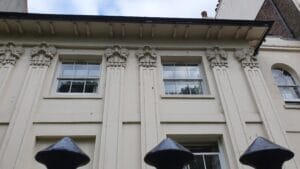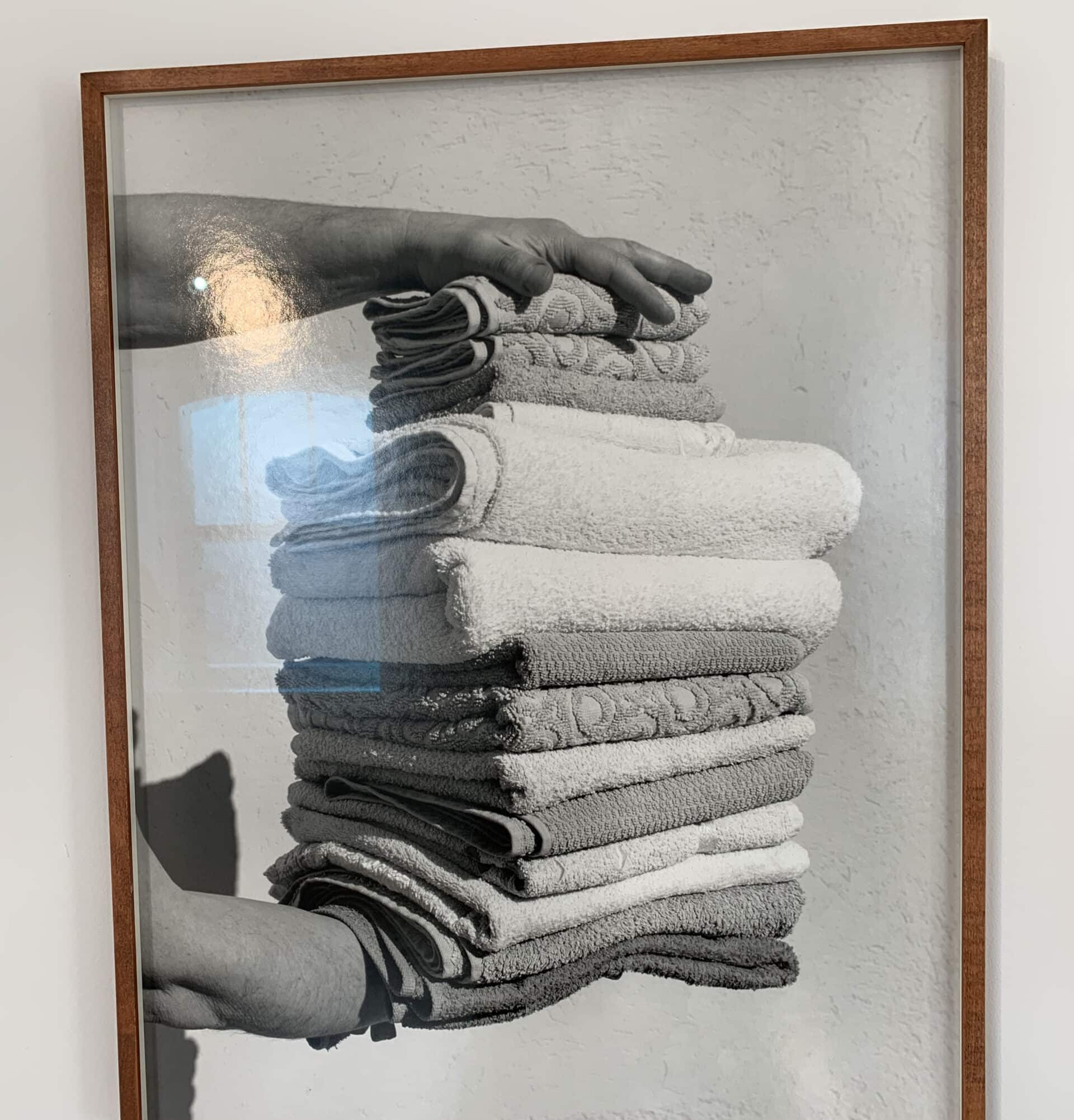A history of London Road – walking tour with Geoffrey Meads, Brighton Fringe

Stella Sims
Standing at St Peter’s Church in Brighton on a busy afternoon in the middle of a Brighton Festival weekend, it’s hard to believe this area was once a genteel and peaceful Regency suburb. But that’s what I was asked to imagine on Sunday when I joined a small group for a fascinating local walking tour with social geographer Geoffrey Mead. Accompanied by the sound of rumbling buses and echoes from the tents and beer gardens of the Caravanserai pop-up fringe venue, we gazed on York Place and were encouraged to notice the smart Regency houses still proudly visible above the modern shop fronts. Geoffrey explained that at the time of their construction in the 19th century, these houses had generous front gardens that looked out across an open green area to the other lovely Regency homes on
Richmond Place. He explained that ‘well-to-do types’ liked to look out towards properties inhabited by the similarly well-to-do.
Geoffrey’s walk was a whistle-stop historical journey through architecture in the wider London Road area, starting at St Peter’s Church and taking in The Level and border of Hanover. A busy shopping and residential area for many decades, in recent years London Road has seen rapid redevelopment and prominent new construction and building projects.
However, Geoffrey took us back to an era in Brighton characterised by even more intense
urban change: the Regency era when the former fishing village was truly transformed into a
fashionable seaside resort where the population boomed.
As the town swiftly expanded northwards from the sea, the London Road area was
characterised by comfortable suburbs. A strip of (mostly) green space and parks, now
broadly known as Valley Gardens, still runs from north to south from The Level down to the
pier. The widening of roads that hastened the demise of the leafy district along York Place
wasn’t due to the car but to make way for the electric tramway linking the north of town to
the seafront at the turn of the 20th century.
Today’s London Road is not only the HQ of Quiet Down There in the Open Market, but also
the area I call home. What I found particularly inspiring about the walk was the opportunity
to pay attention and see with fresh eyes the streets I frequently take for granted. I was
pleased to hear Geoffrey describe The Level as always having been a ‘peoples park’. Marshy
and swampy so never built on, the 18th and 19th centuries saw The Level used much as it is
today: a site of public recreation and entertainment, as well as a place of politics and
protest. We learned about the very old English game of ‘Bat and Trap’, which was
traditionally played on The Level until the early 20th century, commemorated by the pub sign
of the nearby Bat and Ball pub.
Just round the back of where I live, we explored a small street where a line of pretty pebble-
fronted cottages from the early 1800s remain standing, hemmed in by a mix of new
buildings and the tall rear facades of substantial Regency townhouses. We walked round
The Level, amazed to hear about the numerous 19th century glasshouse nurseries near Rose
Hill that specialised in geraniums and grapes, assumedly to furnish the gardens and tables of
those wealthy Regency residents. As we ventured down the private road of the majestic and exclusive Hanover Crescent, past and present wealth was evident. Looking up there are
many beautiful architectural details, including the decorative ammonites that were the
hallmark of architect and builder Amon Wilds, whose bold Regency designs are still visible
all over the city.
We passed by the handsome and imposing red brick Phoenix Brewery, now a community
centre. Local activists Harry and Harriett Cowley were known to enjoy an ale in the adjoining
brewery tap – formerly the Freebutt – but now the pub stands derelict. Phoenix Residents’
Association have campaigned to turn the building into a community asset but the future
remains uncertain. We concluded our tour with the rather sad sight of another defunct pub.
However, Geoffrey encouraged us to look carefully and notice beauty in this dilapidated
façade. Built in the 1930s as The Richmond, you can still see the sun-shaped details above
the windows, defiant signs of its former life. Rather appropriately, the building last housed a
venue called ‘Back in time’. History tells us that nothing stays the same for long, but
communities have always fought for things that are worth keeping. Despite the rapid
change going on around London Road remnants of the past are all over the place. You don’t
have to look too hard to find them and it’s a curious joy when you do.





